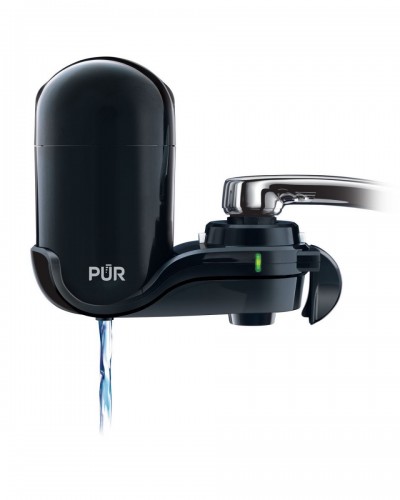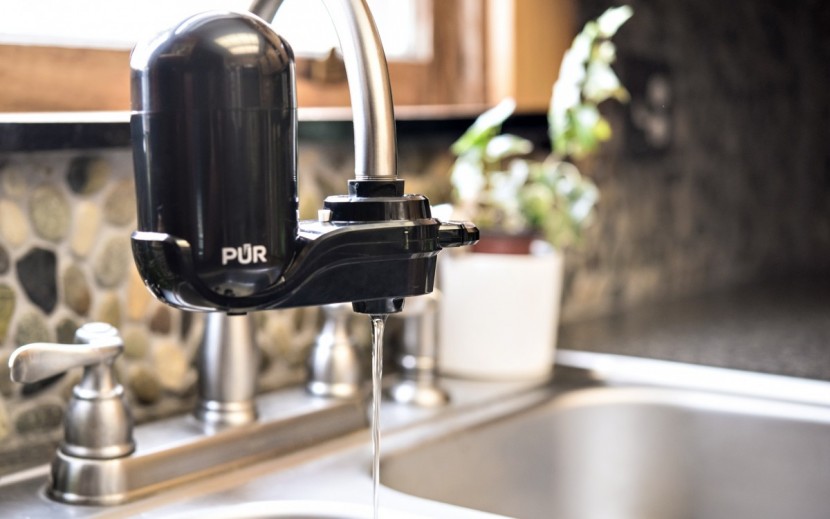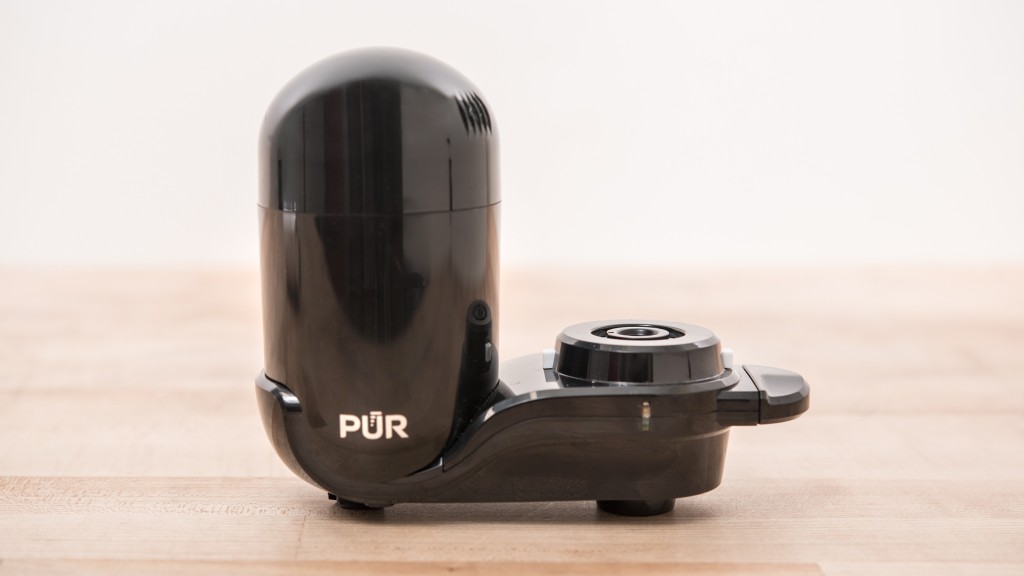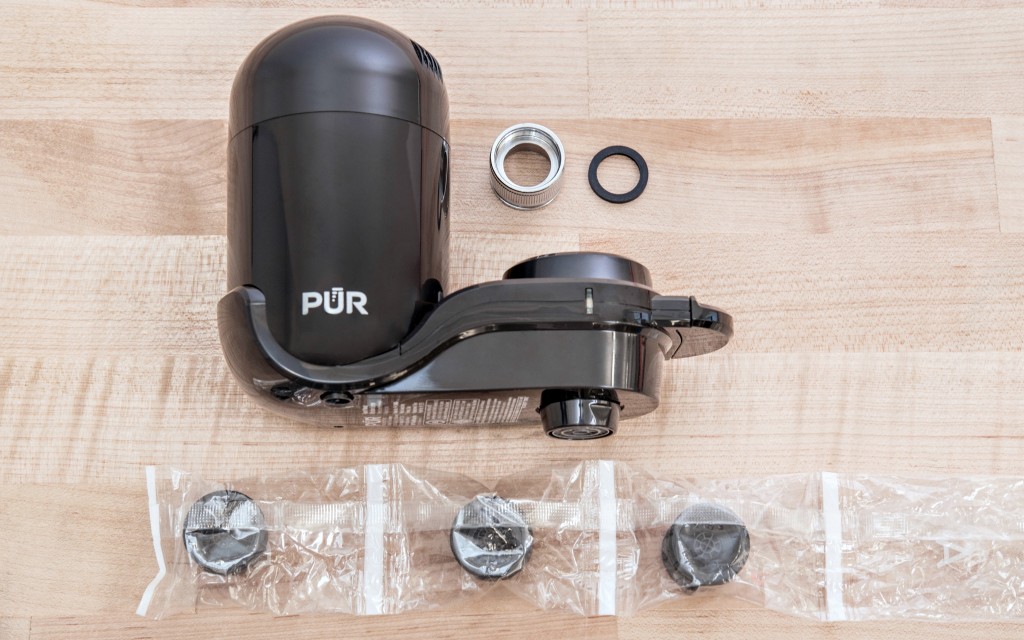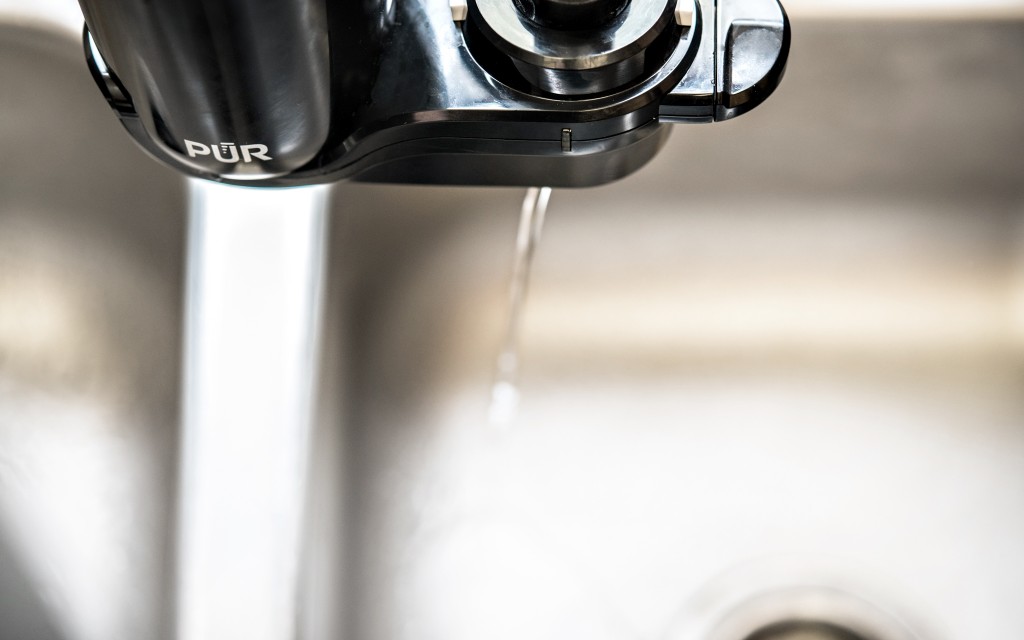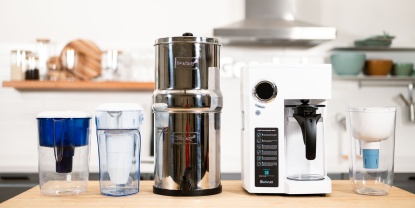PUR Classic FM-2000B Review
Our Verdict
Our Analysis and Test Results
The FM-2000B finished very near the bottom of the group, only really outperforming the Nanan Healthy Faucet. The Brita SAFF-100 — another faucet mount filter — did quite a bit better and only costs about $10 more. The ZeroWater Pitcher is one of the top water filters we've tested and only costs about $15, making it very, very difficult to recommend the PUR when there are other alternatives that are so much better for only a slight increase in cost.
Lead Removal
To assess how competent the PUR is at extracting lead from water, we mixed up a tank of water with very high lead levels, then had the PUR attempt to clean it. We took samples of the water supply before and after, then sent them off to a lab for analysis, as we lacked the equipment here to measure it. Unfortunately, the PUR didn't do particularly well, earning a 1 out of 10 for its poor showing. This filter only removed about 60% of the lead, leaving the water with levels around 0.91 ppm — well above the 0.015 deemed suitable for tap water by the EPA.
Chlorine Removal
We did a similar procedure for this test, making two different batches of supply water with different levels of chlorination, then had each filter attempt to de-chlorinate it. We used both indicating test strips and a TDS meter to read the chlorine levels in the water, finding the first test's supply to have about 1300 ppm, while the second's supply was between 20-50 ppm. The PUR did much better at extracting chlorine than lead, meriting an 8 out of 10.
The FM-2000B delivered a decent performance for the highly chlorinated water, dropping the levels to just over 20 ppm, to where our test strip just began to turn green. For the less chlorinated water, the PUR pretty much removed all of the chlorine, with the test strips failing to read anything.
Salt Removal
The PUR couldn't maintain its performance into this metric, earning a 1 out of 10 for its pitiful performance. We used table salt as our sample salt, dissolving it in the test water supply until it reached significant concentrations, then attempted to filter it with the FM-2000B.
The levels remained unchanged, registering at about 445 ppm on our meter both before and after filtration.
Taste
For our taste tests, we ran some very foul-tasting water through each filter, to see if they could successfully mitigate the chlorine bleach and salt that we added to the supply. We also ran already cleaned and filtered water through each, to see if the filters added any unpleasant tastes. The FM-2000B did a slightly below average job, earning a 4 out of 10.
This filter didn't handle the poor tasting water very well, with our panel detecting distinct notes of both salt and chlorine in the filtered water. However, it did do a little better with the clean water, failing to add any unsavory flavors while filtering.
Flow
Last, we ranked and scored the flow rate of the PUR. We did this by timing how long it took each one to fill up a 1-quart container and scoring off of that. The PUR did about average, earning a 5 out of 10 for its time of 30 seconds — a little over three times the 9 seconds it took the unobstructed faucet.
Value
While the PUR won't break the bank, it isn't an amazing value, as there are other filters that cost about the same and perform much better, giving you more bang for the buck.
Conclusion
Overall, we weren't terribly fond of the PUR FM-2000B, finding it to be far inferior to the majority of the other products that we tested and would suggest you consider other options, rather than purchasing it.


